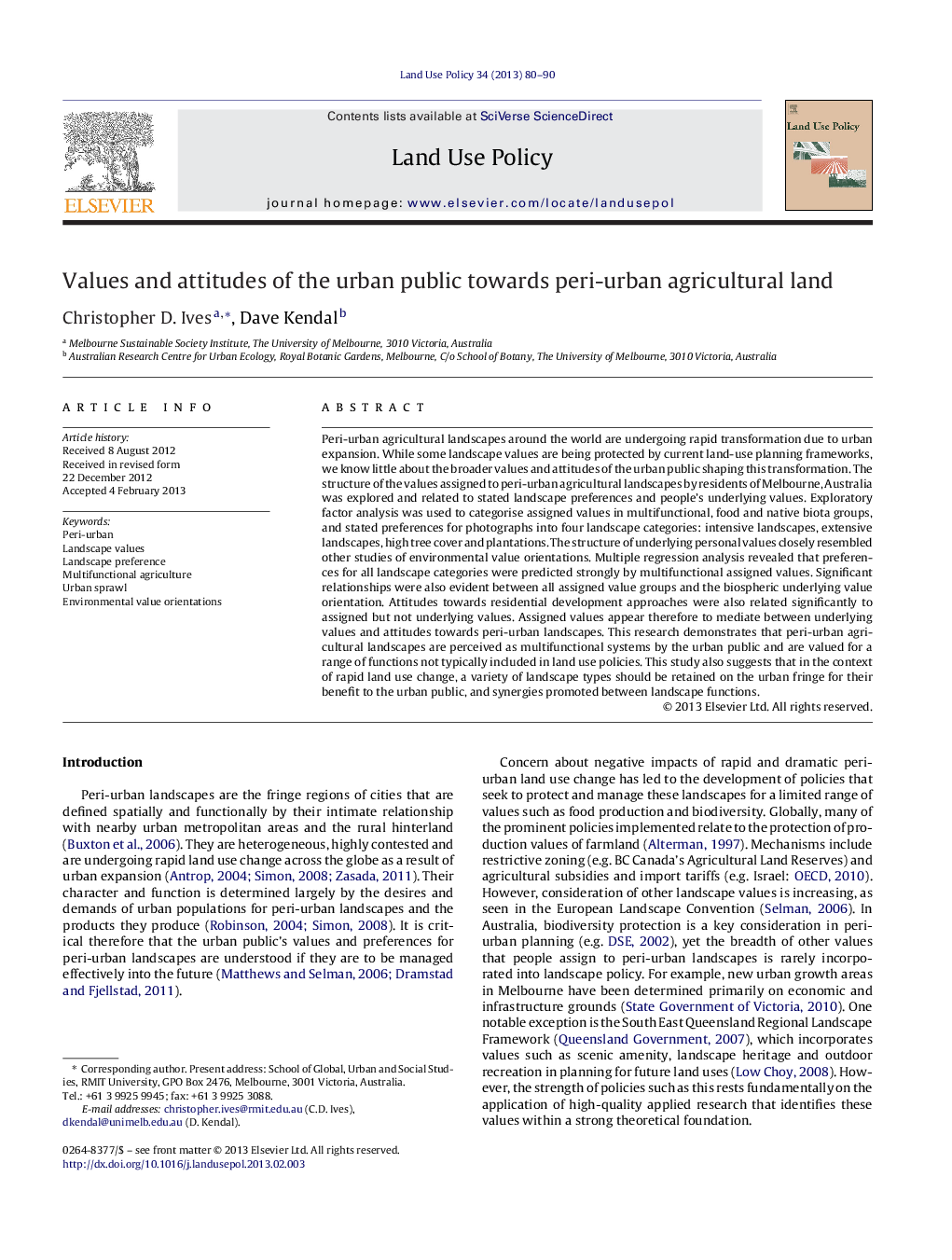| Article ID | Journal | Published Year | Pages | File Type |
|---|---|---|---|---|
| 93207 | Land Use Policy | 2013 | 11 Pages |
Peri-urban agricultural landscapes around the world are undergoing rapid transformation due to urban expansion. While some landscape values are being protected by current land-use planning frameworks, we know little about the broader values and attitudes of the urban public shaping this transformation. The structure of the values assigned to peri-urban agricultural landscapes by residents of Melbourne, Australia was explored and related to stated landscape preferences and people's underlying values. Exploratory factor analysis was used to categorise assigned values in multifunctional, food and native biota groups, and stated preferences for photographs into four landscape categories: intensive landscapes, extensive landscapes, high tree cover and plantations. The structure of underlying personal values closely resembled other studies of environmental value orientations. Multiple regression analysis revealed that preferences for all landscape categories were predicted strongly by multifunctional assigned values. Significant relationships were also evident between all assigned value groups and the biospheric underlying value orientation. Attitudes towards residential development approaches were also related significantly to assigned but not underlying values. Assigned values appear therefore to mediate between underlying values and attitudes towards peri-urban landscapes. This research demonstrates that peri-urban agricultural landscapes are perceived as multifunctional systems by the urban public and are valued for a range of functions not typically included in land use policies. This study also suggests that in the context of rapid land use change, a variety of landscape types should be retained on the urban fringe for their benefit to the urban public, and synergies promoted between landscape functions.
Graphical abstractFigure optionsDownload full-size imageDownload as PowerPoint slideHighlights► Values assigned by the urban public to peri-urban agricultural land were assessed. ► Distinct multifunctional, food and native biodiversity value groups were identified. ► All assigned value groups were related to a biospheric underlying value orientation. ► Assigned values mediate relationships between underlying values and landscape preferences. ► Planning for multiple values is required to ensure the expectations of city residents are met.
